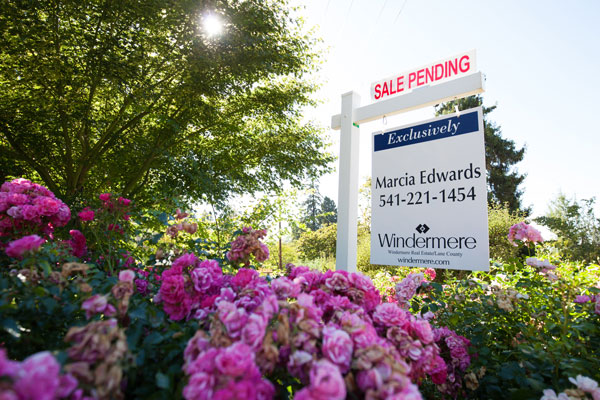
As a Residential Realtor in Lane County, it is my job to assist clients in ‘moving smart’ in the marketplace. Realtors are in the precarious position of having to predict the future actions of consumers. Sure, we have data available of recent sales of similar properties in close proximity as a reference point and that helps. But forecasting the consumers next move; what they are willing to pay tomorrow for the unique opportunity, is full of challenge. Anticipating the sales price of a home is not like ‘blue book’ pricing a car and that is why remote pricing mechanisms like Zillow fall short.
1. A home is worth what a buyer is willing to pay in today’s market. Sounds simple.
But as you peel off the layers within that statement, you discover my challenge as your Realtor. First, who is the buyer? By identifying for whom the home will have the greatest appeal, helps me to understand the level of demand in the marketplace. For example, a second floor, one-room condominium will appeal to some buyers, but not all buyers. The floor plan of the home plays a significant role in defining the next owner as well. If the home has four bedrooms and only one common area (living room but no family room), it is not likely that a family who would use all four rooms as bedrooms would find the common areas sufficient as daytime living space. And a home with the second bath off of the laundry room versus, the second bath located off one of the bedrooms, which has less appeal.
2. The condition of the home has a significant impact on the price.
This is because the home is competing among all other homes available homes on the market when listed. Buyers will look at the home with an educated and critical eye. In forecasting the sales price of a home, I walk through the home considering what I buyer will perceive that they will need to repair or remodel during their ownership.
3. Positioning the home for success among the competition in the marketplace is critical.
A key component in coaching Sellers on how to position themselves for success as they set their price is what other homes are being offered at the time of listing. If the home being listed is a unique opportunity and there are few opportunities available that are similar, the timing of your listing may offer a financial upside.
4. The location is the most significant influence on pricing.
Zillow offers similar sales within the radius of the home without regard to the fact that the subject property is tucked on a quiet side street and it is being compared to a home on a nearby major arterial street. When pricing I handpick the similar neighborhood sales that parallel the subject property for opportunity based on its location.
5. The broader market trends do influence pricing.
Today’s market trends speak to the consumer confidence and selling climate. When the prices are going up in an ‘appreciating’ marketplace, the risk is in overshooting the anticipated list price and later have to deeply discount price to regain the buyer’s attention. Or worse, to underprice the home and leave money on the table. As your Realtor, I look at the activity trends in great detail, but I look specific to your home’s area and price point. How far off the list price are buyers negotiating in your market? What is the median days on market? These touchpoints allow the seller to read the feedback on their home as they enter the market. During the depreciating market in during the recession the fear was that the home if overpriced initially, Sellers find themselves chasing the market downward and taking a long time to sell.
Among the other considerations in pricing: the finance terms available for a home like yours, the anticipated level of exposure the home will have in the marketplace and the urgency of the seller’s time frames required for a sale.
